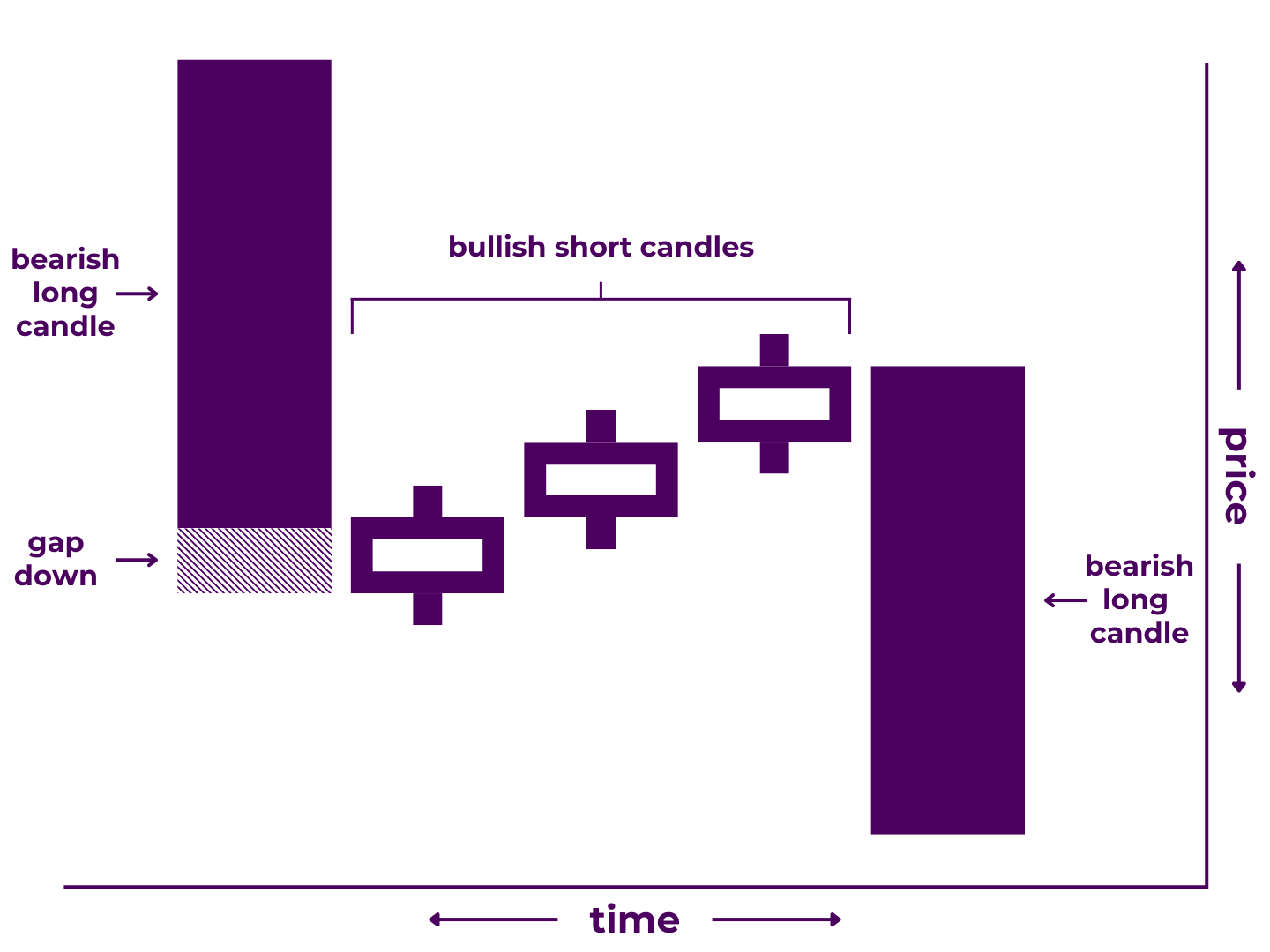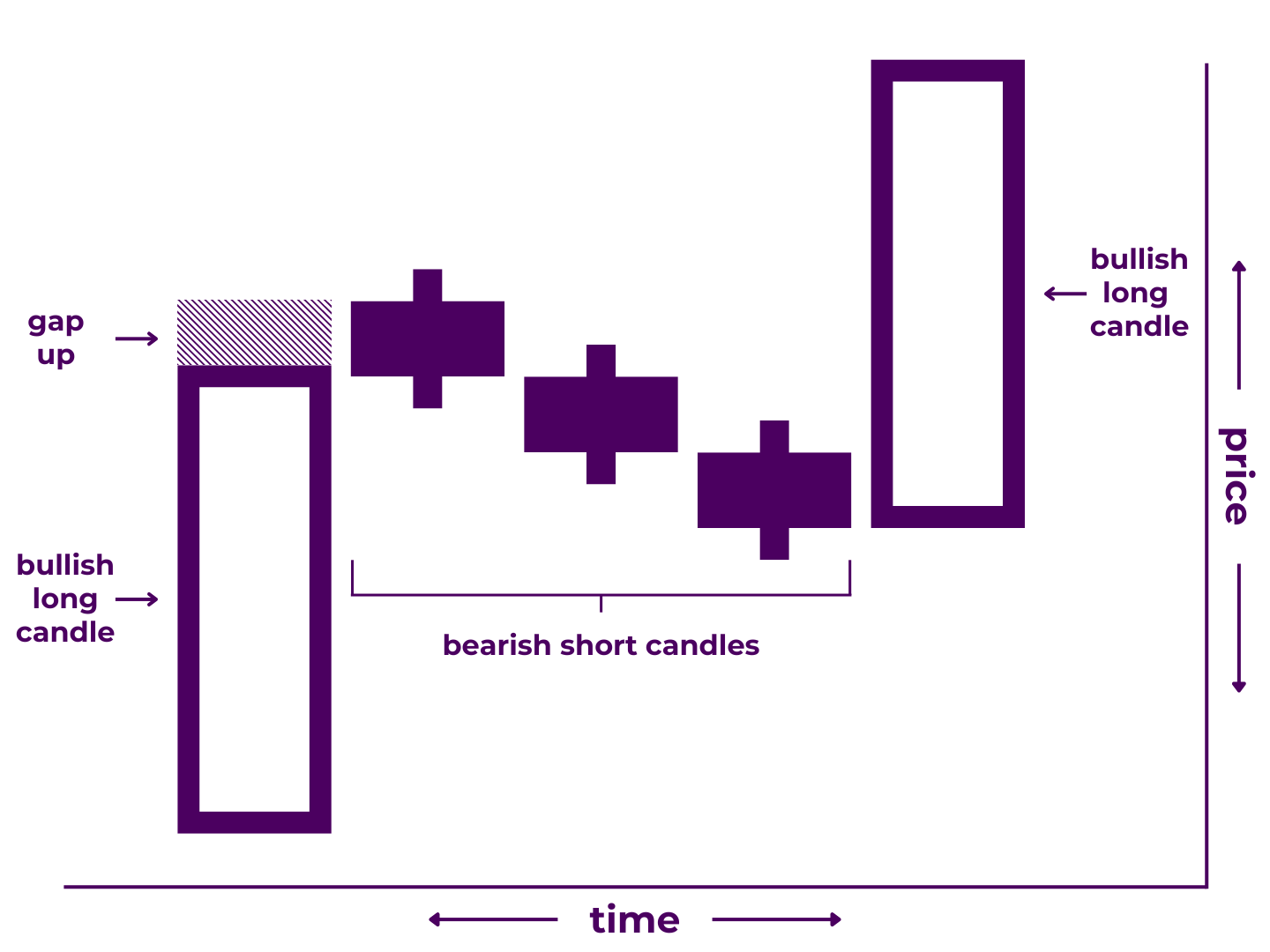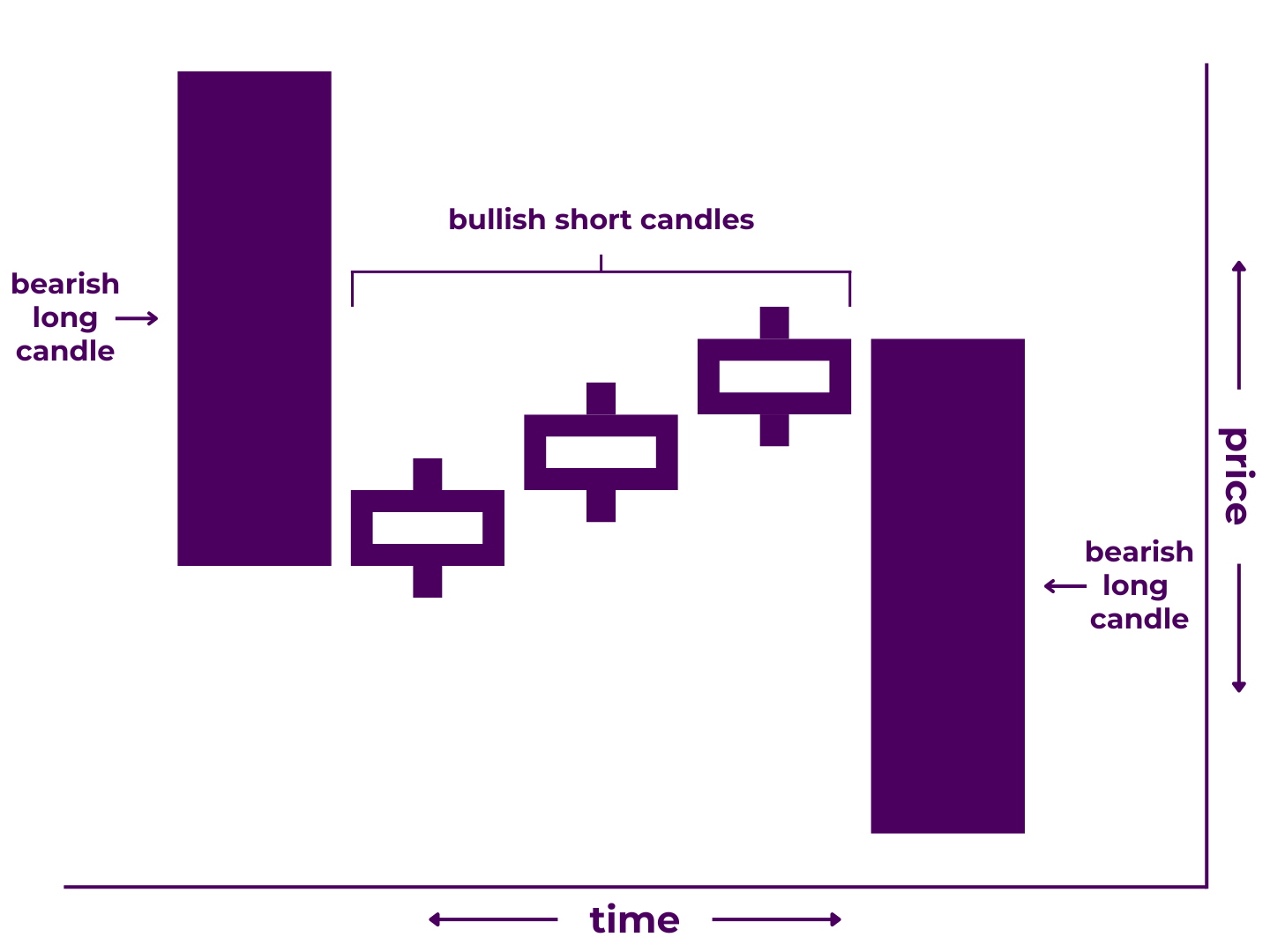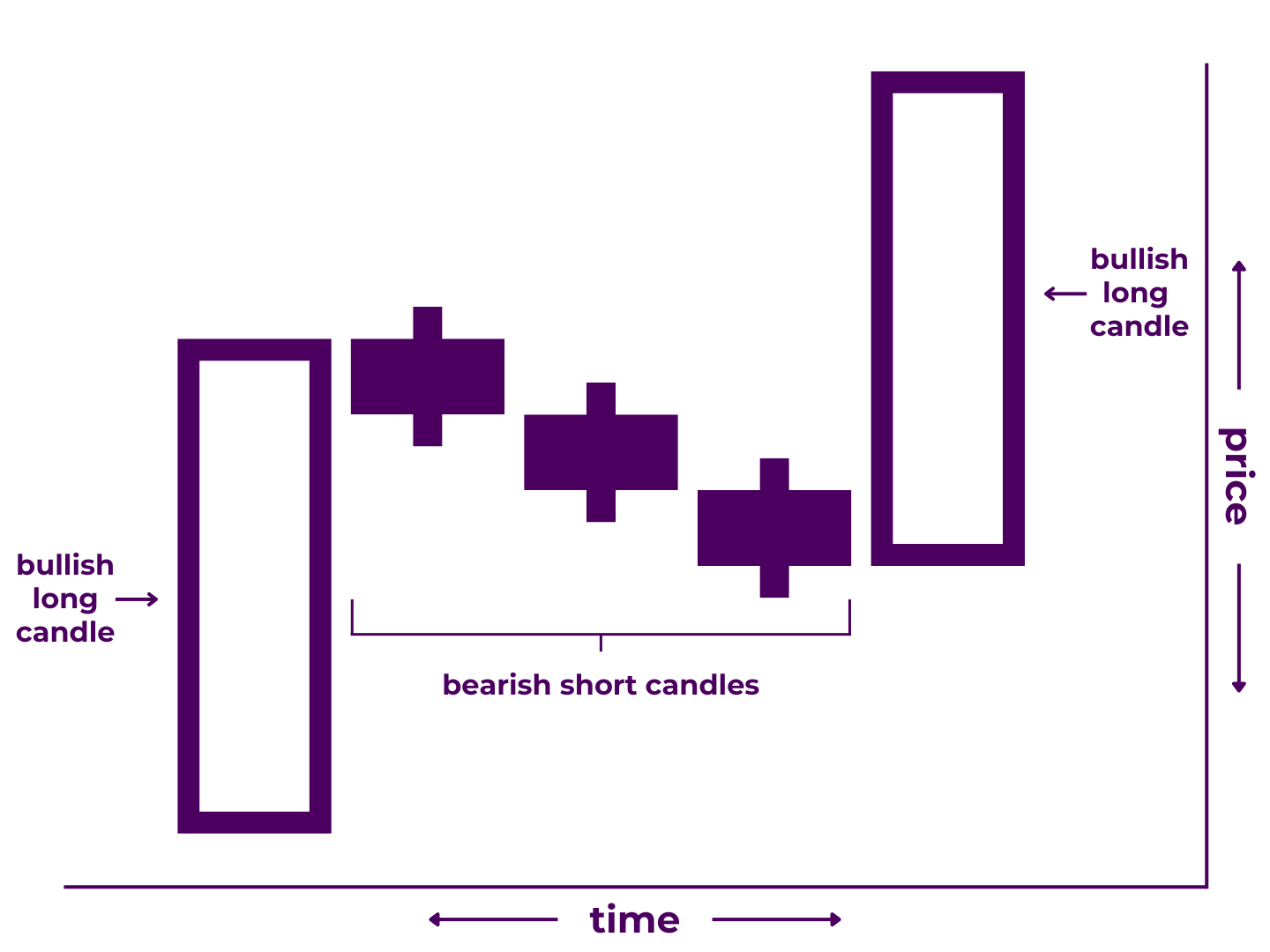So you want to learn about five-candlestick patterns, huh?
Smart choice.
Recognizing different types of candlestick patterns is a useful skill all traders should master.
Here, we will go over the top 2 5-candlestick patterns.
Identifying 5-Candlestick Patterns
There are a handful of patterns that consist of five candlesticks.
Some patterns imply potential reversal. Other patterns imply potential continuation.
Take special note of the words imply and potential.
Candlesticks represent past price action.
Therefore, no group of candlesticks can guarantee a future outcome. Instead, you should look at them as warning signs or points of interest.
Time is also an important factor. Generally, patterns that represent larger time intervals have greater potential ramifications. That means that patterns on higher-term timeframes should be taken more seriously. It also means that 5-candlestick patterns may be more reliable than 2-candlestick and 3-candlestick patterns.
Of course, this is not always true—as factors like notoriety may also impact a pattern’s efficacy. This is one reason why it is so important to analyze the historical performance of individual candlestick patterns in the context of your asset and timeframe pairing.
In the same breath, it is also crucial to wait for the full pattern to complete before you give it any weight. It’s quite common for a group of candlesticks to begin to form a recognizable pattern only for the final candle to break the formation. So always wait for the fifth and final candle to close before you label any five candlesticks a “pattern.”
Furthermore, experienced traders use additional points of confirmation for a signal before making any trading decisions. Oftentimes, candlestick patterns are better suited as final confirmation.
Still, you have to learn to see them if you’re ever going to be able to use them.
Here are the 2 most common 5-candlestick patterns in alphabetical order:
Mat Hold
A mat hold pattern is a 5-candlestick formation that may signal a continuation.
It is made up of a large candlestick moving in the direction of current trend, followed by a gap and three shorter candles that move against trend but do not close beyond the open of the first candle, then another large candle that closes beyond all prior candles in the direction of trend.
It comes in both bearish and bullish variations.
Bearish ones look like this:
Bullish ones look like this:
In trading terms:
- During the first period, the price drove strongly in the direction of trend.
- The second period opened with a gap that got filled over the course of the next three periods as price moved against trend but never closed beyond the open of the first period.
- During the fifth period, price resumed and exceeded the movement of the first period.
Mat hold patterns show that one side attempted to press their advantage on candle one (and between candles one and two), stalled for the next three candles, before finally regaining control and pressing trend further.
Pattern Type: Continuation
Number of Candlesticks: 5
Looks Like/Narrative Meaning: a one-sided beatdown or near-knockout blow
Technical Specifications***
Technically, a mat hold pattern must:
- Begin with a long candle moving with trend
- Have a gap in the direction of trend after the first candle that get filled over the course of the next three candles
- Have three consecutive short candlesticks after the first candlestick, that move against trend
- Not have any of the middle candles close beyond the open of the first candle
- End with another long candle moving with trend, that closes beyond the body and wicks of all prior candles in the pattern
In practicality though, many traders will make various exceptions.
- The first candle doesn’t necessarily have to be a long candle, as long as none of the smaller candles close beyond the first candle’s open.
- The middle three candles don’t all have to be short candlesticks and move against the trend, as long as none close beyond the open of the first candle.
- The gap can go, especially in markets where gaps are less common like cryptocurrency.
- The final candle doesn’t necessarily have to close beyond all the wicks of the prior candles, as long as it closes beyond the bodies.
***Depending on who you ask, any of these standards may be more or less important. Moreover, some of these variations may be more properly classified as other continuation candlestick patterns.
Related Patterns
- Similar to Three Methods Pattern
For more detail, read our full breakdown on How to Trade Mat Hold Candlestick Patterns.
Three Methods
A three methods pattern is a 5-candlestick formation that may signal a continuation.
It is made up of a large candlestick moving in the direction of current trend, followed by three shorter candles that move against trend but do not close beyond the open of the first candle, then another large candle that closes beyond all prior candles in the direction of trend.
It comes in both bearish and bullish variations, known respectively as the falling three methods and rising three methods.
Bearish ones look like this:
Bullish ones look like this:
In trading terms:
- During the first period, the price drove strongly in the direction of trend.
- During the next three periods, price traded against trend but never closed beyond the open of the first period.
- During the fifth period, price resumed and exceeded the movement of the first period.
Three methods patterns show that one side attempted to press their advantage on candle one, stalled for the next three candles, before finally regaining control and pressing trend further.
Pattern Type: Continuation
Number of Candlesticks: 5
Looks Like/Narrative Meaning: one-sided beatdown or near-knockout blow
Technical Specifications***
Technically, a three methods pattern must:
- Begin with a long candle moving with trend
- Have three consecutive short candlesticks after the first candlestick, that move against trend
- Not have any of the middle candles close beyond the open of the first candle
- End with another long candle moving with trend, that closes beyond the body and wicks of all prior candles in the pattern
In practicality though, many traders will make various exceptions.
- The first candle doesn’t necessarily have to be a long candle, as long as none of the smaller candles close beyond the first candle’s open.
- The middle three candles don’t all have to be short candlesticks and move against the trend, as long as none close beyond the open of the first candle.
- The final candle doesn’t necessarily have to close beyond all the wicks of the prior candles, as long as it closes beyond the bodies.
***Depending on who you ask, any of these standards may be more or less important. Moreover, some of these variations may be more properly classified as other continuation candlestick patterns.
Related Patterns
- Similar to Mat Hold Pattern
For more detail, read our full breakdown on How to Trade Three Methods Candlestick Patterns.
Takeaways
Obviously, there are quite a few different candlestick patterns.
However, you don’t have to memorize all the names and exact specifications. Instead, focus on the principles of price action and technical analysis. That way, you’ll see what is going on with any candlestick formation, whether it fits into one of these categories or not.
At the end of the day, understanding candlestick patterns is only one piece of the puzzle. You’ll need more tools in the toolkit to read the full story in the charts—and even more than that if you want to put together a complete trading strategy.
Know of an important candlestick pattern we missed? Have some special insight into trading a specific pattern? Contribute to the conversation in the comments below! Or, share this post with a trader it might help. And if you haven’t already, check out our Candlestick Patterns Guide to learn the best ways to trade candlestick patterns.





0 Comments